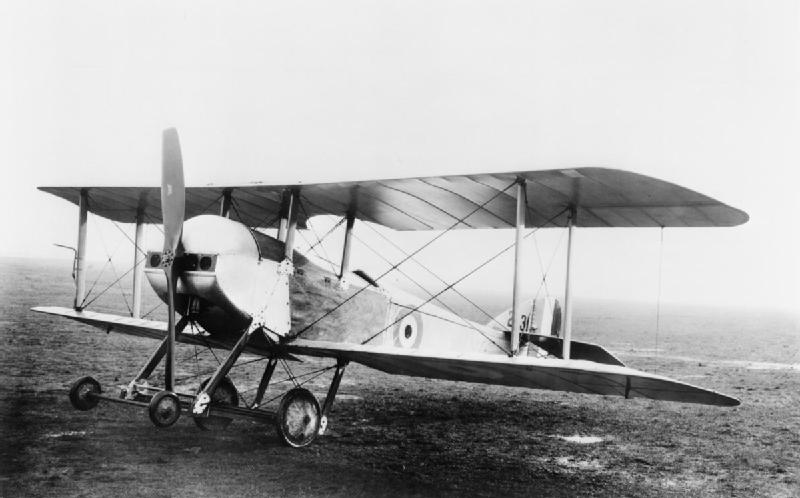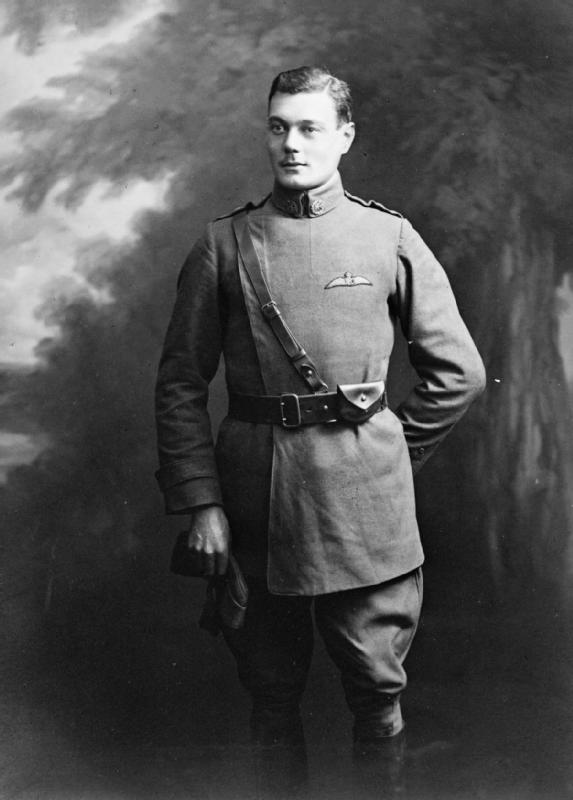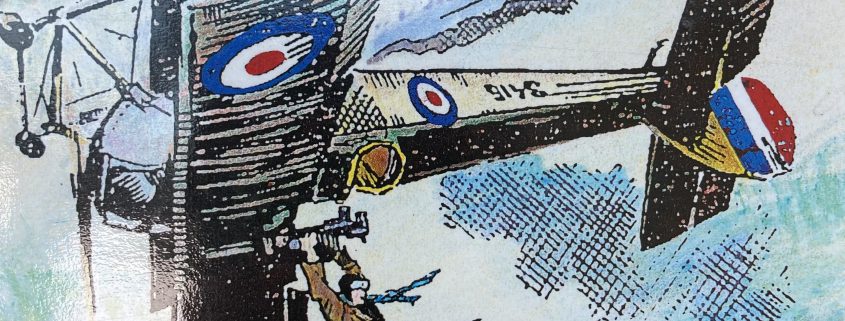Hollywood Aerial Stunt – or Real Life Above the Western Front?
In 1915 Dorset Royal Flying Corps pilot Louis Strange fell out of the open cockpit of his single-seat Martinsyde S1 Scout biplane at 8000 feet above northern France. In the middle of a dogfight with a German Aviatik, the ammunition drum on his Lewis machine gun had jammed. When Strange stood up to try and free the magazine, the notoriously unstable Scout flipped over onto its back. With no parachute – not yet issued to British pilots – Strange faced the prospect of a long fall to a certain death, perhaps marginally preferable to being consumed by fire in a more controlled descent, the fate of many airmen.

It’s reasonable to assume that Strange escaped from his predicament, otherwise he wouldn’t be the subject of a fascinating talk by Tony Otton at 2.30p.m. on Tuesday 05 November at Gold Hill Museum. See the whole winter programme of lectures here. In fact Louis Strange was a constant innovator: the first RFC pilot to mount a Lewis gun on his aircraft (and then be ordered to remove it, because of the detrimental effect on the plane’s performance); the first to experiment with dropping home-made petrol bombs by hand on the enemy; and the first to drop footballs on a German-occupied airfield at Lille on Christmas Day 1914. After an inter-war sabbatical from flying, back on the family farm at Spetisbury, Strange at nearly 50 years of age was the last to escape from Merville, France, in 1940 in a Hurricane he’d never flown before, hotly pursued by 6 German Me-109s. There are so many dimensions to this man’s life that it is entirely plausible that he was the role model for Captain W.E. Johns’s fictional air-adventurer Biggles, the hero of nearly 100 books. This talk is one not to be missed. It’s free to members of The Shaftesbury & District Historical Society while seats should be available to non-members from 2.20p.m. on payment of £5 at the door.




